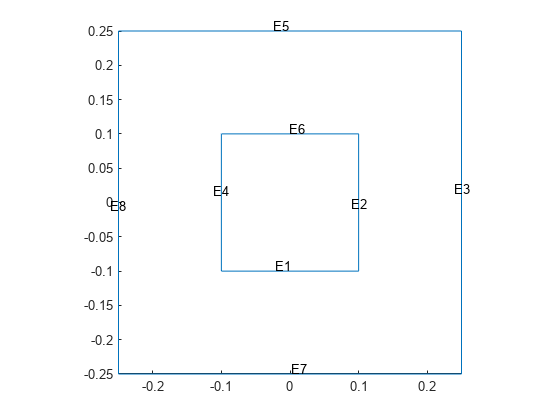Electrostatic Potential in Air-Filled Frame
This example shows how to find the electrostatic potential in an air-filled annular quadrilateral frame.
The PDE governing this problem is the Poisson equation
Here, is the space charge density, and is the absolute dielectric permittivity of the material. The toolbox uses the relative permittivity of the material , such that , where is the absolute permittivity of the vacuum. The relative permittivity for air is 1.00059. Note that the permittivity of the air does not affect the result in this example as long as the coefficient is constant.
Assuming that there is no charge in the domain, the Poisson equation simplifies to the Laplace equation: For this example, use the following boundary conditions:
The electrostatic potential at the inner boundary is 1000V.
The electrostatic potential at the outer boundary is 0V.
Create an electromagnetic model for electrostatic analysis.
emagmodel = createpde("electromagnetic","electrostatic");
Import and plot a geometry of a simple frame.
importGeometry(emagmodel,"Frame.STL"); pdegplot(emagmodel,"EdgeLabels","on")

Specify the vacuum permittivity value in the SI system of units.
emagmodel.VacuumPermittivity = 8.8541878128E-12;
Specify the relative permittivity of the material.
electromagneticProperties(emagmodel,"RelativePermittivity",1.00059); Specify the electrostatic potential at the inner boundary.
electromagneticBC(emagmodel,"Voltage",1000,"Edge",[1 2 4 6]);
Specify the electrostatic potential at the outer boundary.
electromagneticBC(emagmodel,"Voltage",0,"Edge",[3 5 7 8]);
Generate the mesh.
generateMesh(emagmodel);
Solve the model. Plot the electric potential using the Contour parameter to display equipotential lines.
R = solve(emagmodel); u = R.ElectricPotential; pdeplot(emagmodel,"XYData",u,"Contour","on")

